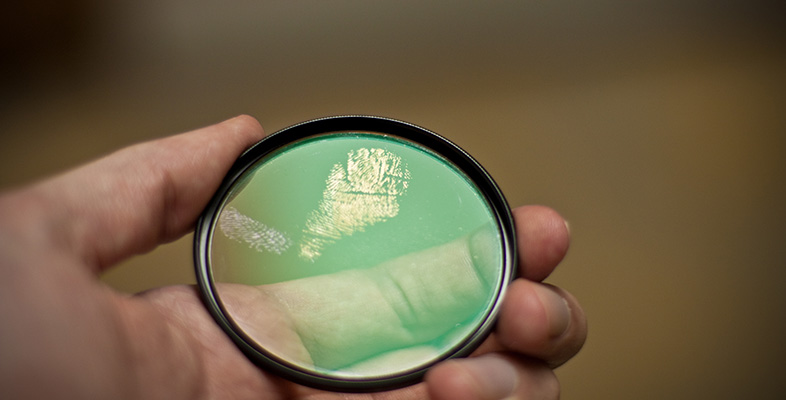Forensic science and fingerprints
Introduction
This course covers how science can make fingerprints easier to study, how they are used in court and some of the questions about the extent to which fingerprint identification is sound and scientific.
Visible fingerprints can be photographed conventionally but an important scientific problem is how to make 'latent' fingerprints, which are not visible to the naked eye, available for examination. Two scientific approaches are described. The first is the use of chemical change; that is, the transformation of one substance into another, in this case often accompanied by a colour change. The second uses light, and other types of electromagnetic radiation, to interact with the fingerprints and make them visible. The fingerprints can then be photographed, ready to be compared by experts with a database of fingerprints or with fingerprints taken from a suspect. Assuming that a successful match is found, fingerprint evidence can then be used in an attempt at individualisation.
This OpenLearn course provides a sample of level 1 study in Science [Tip: hold Ctrl and click a link to open it in a new tab. (Hide tip)]
